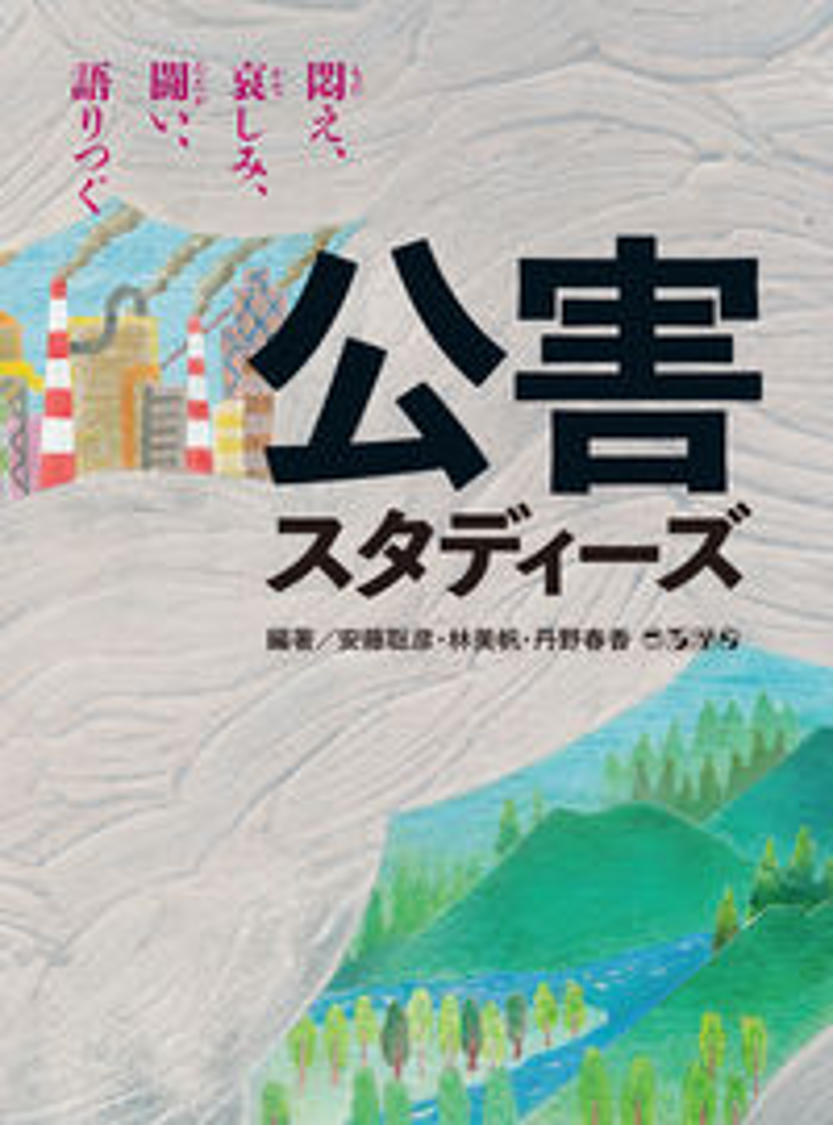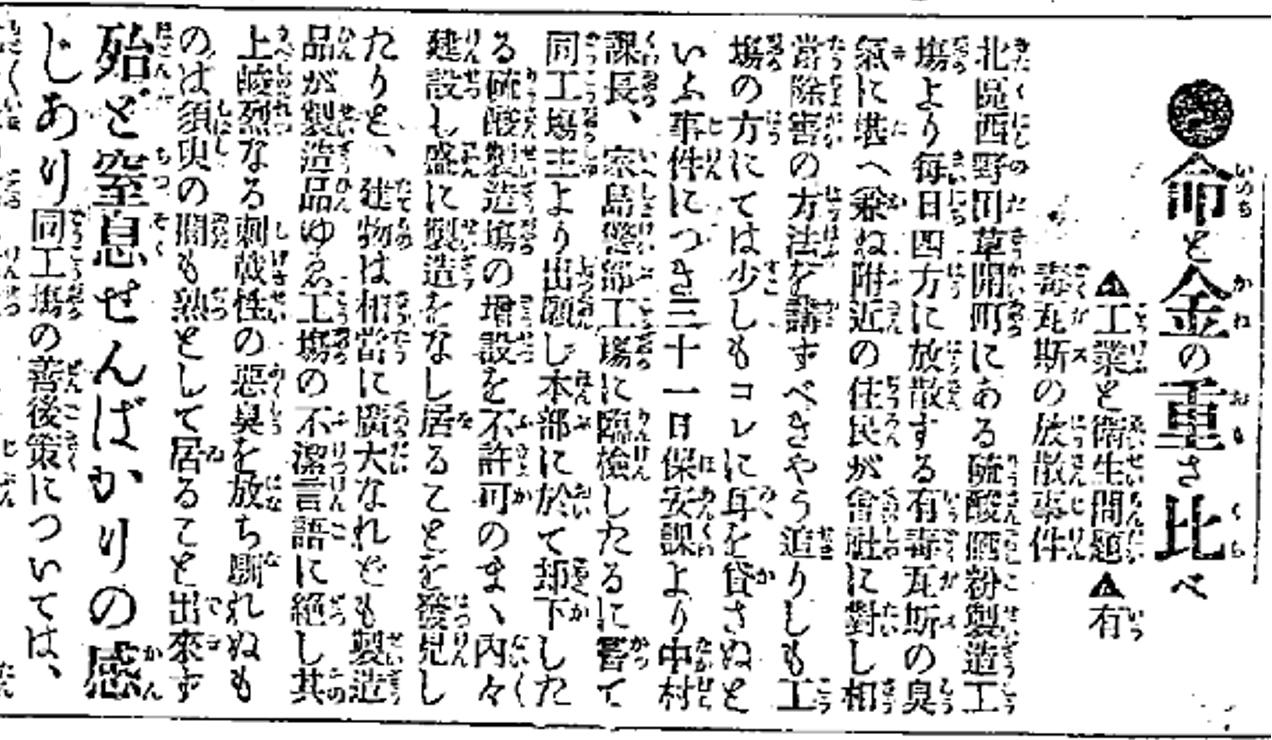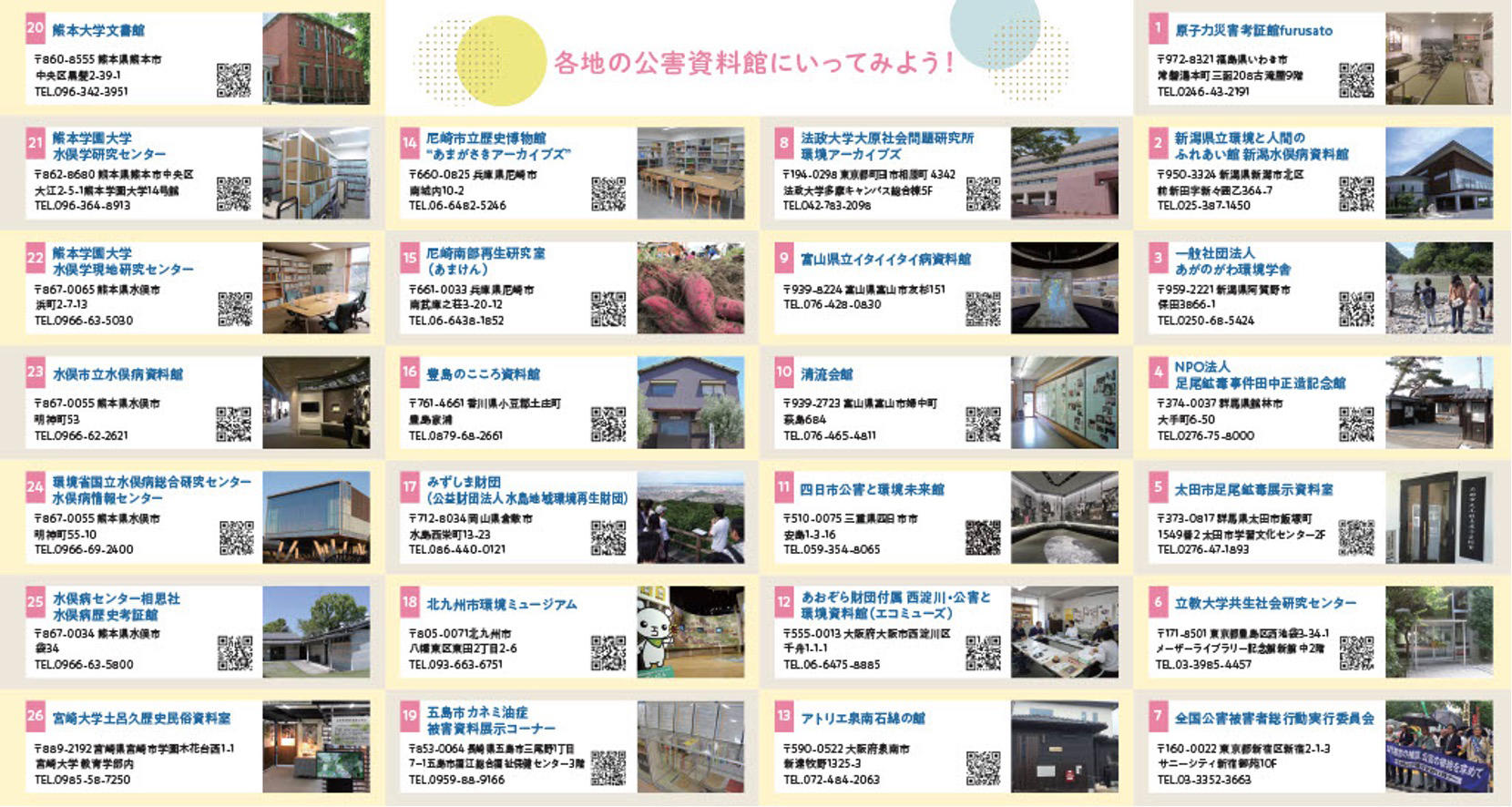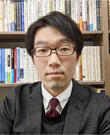Thinking about Pollution as an Ongoing Issue
Yoshihito Shimizu/Associate Professor, Faculty of Letters, Chuo University
Areas of Specialization: Modern Japanese History and Archival Studies
A book born through crowdfunding

Cover of The Pollution Studies
There is a book called The Pollution Studies: Agony, Sorrow, Struggles, and Handing Down (written and edited by Toshihiko Ando, Miho Hayashi, and Haruka Tanno; Korocolor). I was also involved in the publication of this book as one of the authors. This book was published through crowdfunding in October 2021 with the support of more than 250 people who supported its purpose.[1] You might not come across the word of pollution much these days, and it may be something that you only learn in textbooks. Nevertheless, why did so many people support the publication of this book? The following message was sent from a supporter via the crowdfunding sites:
"Pollution is not a thing of the past. There are ongoing issues such as fragrance pollution, pesticides, chemical pollution, low-frequency noise, etc. I hope this book will inspire many to think about these issues."[2]
The writers and editors of the book clearly shared the sentiment and stated on the same website that "pollution is not an event in the past but an ongoing one, and it will have a huge impact on our lives as well as the way we live in the future." Pollution is not a thing of the past. It undoubtedly concerns all of us now and in the future.
Is pollution a thing of the past?
When you hear the word of pollution, many of you may think that it is something that happened a long time ago or ended. In my class titled "Modern Japanese History B," I asked students "what comes to your mind when you hear pollution?" through a questionnaire. The most common answer was the Ashio Copper Mine poisoning incident, which perhaps proves the point.
Without a doubt, pollution has been one of the major social problems in modern Japan. Japan, which became a modern nation through the Meiji Restoration, relentlessly pushed for industrialization in the name of Fukoku Kyohei (to enrich the country and strengthen the armed forces), which caused pollution to occur behind the scenes. In addition to the Ashio Copper Mine poisoning incident mentioned above, pollution was rife in Osaka as the city was the epicenter of modern industrialization. At that time, Osaka with its numerous factories and endless chimneys was called the Manchester of the Orient in comparison to the industrial counterpart in England. While the black smoke emitted from those chimneys was seen as a symbol of urban development, it was also causing devastating damage to the health of residents and crops. A newspaper published at the end of the Meiji Period included an article with the headline "Comparing the Weight of Life and Money" (The Osaka Asahi Shimbun, June 1, 1912), reporting on the plight of residents suffering from pollution as industrialization progressed.

Comparing the Weight of Life and Money (The Osaka Asahi Shimbun, June 1, 1912)
*Reproduction without permission from the Asahi Shimbun prohibited (Consent number: 23-0061).
The big four pollutions that occurred during the post-war period of high economic growth are well known, but many more pollution incidents were occurring at the same time up and down the country. While pollution became nationwide and common,[3] the government enacted the Basic Law for Environmental Pollution Control in 1967 and established the Environment Agency in 1971. Local governments also began implementing full-scale pollution countermeasures around that time. The Basic Law for Environmental Pollution Control (renamed to the Basic Act on the Environment) singled out air pollution, water pollution, soil pollution, noise, vibration, ground subsidence, and offensive odors as pollution, but pollution is clearly not limited to them according to a provision of this act which stipulates pollution as causing damage to human health or the living environment. The damage caused by pharmaceutical pollution (chemical damages), asbestos, and nuclear power plant disasters such as the Fukushima nuclear accident in 2011 must also be regarded as pollution.
When we think about pollution in this way, it becomes clear that there are still many people who suffer from pollution and we must admit that it is an ongoing event that has obviously never ended. How then, should we face pollution today? This is where learning from the past pollution events and keeping those experiences alive become crucial.
Keeping pollution experiences alive
The opinion of keeping the pollution experiences alive can be seen in the voices of those who supported the purpose of The Pollution Studies. Let's see other messages from the crowdfunding supporters.
"Many of today's environmental problems have pollution at its core, so I think we need to go back and tell people what has been solved and what has not, as well as what new issues are."
"Those who do not learn from the past will surely repeat the same mistakes. The lessons learned from pollution are experiences that must be passed on to the next generation."[4]
How do we pass on the experience of pollution events? One way is storytelling. Pollution victims and their families serve as storytellers and are widely engaged in efforts to convey their experiences. However, as with the storytellers of the war and the atomic bomb damage, the decrease of the people who experienced the events is now a major issue as it is becoming increasingly difficult to continue the storytelling. The importance of archival data increases in this context.
The archival data on pollution are highly diverse. Materials have been created by various entities such as victims, governments, companies, defense lawyers, supporters, researchers, and the media, and the types of materials range from personal ones such as diaries and letters to official documents such as administrative documents and court documents. All of these provide us with the multiple aspects of pollution of the time. Now that we are faced with the problem of the disappearing storytellers, it must be said that the value of these materials is extremely high. Such materials are collected and stored by the facilities called pollution museum and archives.
The pollution museum and archives are located in the areas where pollution events took place, and 26 organizations are registered with the KOUGAI Museum Network, which is a solidarity organization of pollution museum and archives.[5] These pollution museum and archives hold exhibitions on pollution, and organize and make the archival materials on pollution available to the public. These efforts will play a major role in passing on the experience of pollution.

Pollution museum and archives in various regions
(From the leaflet of the KOUGAI Museum Network)
Studying pollution museum and archives through archival studies
I am studying these pollution museum and archives from the perspective of archival studies. The area called archival studies probably sounds unfamiliar to many of you, but in recent years, an increasing number of universities are offering archival studies. The archives refer to the materials with continual value created by and received from individuals, families, organizations, etc., and the facilities that collect and store such materials, and therefore archival studies examine the materials themselves as well as the activities and roles of materials collection and storage facilities such as the public archives. Therefore, the pollution museum and archives are also the subjects of research in archival studies.
So, what are the materials with continual value? Theo Thomassen, a well-known Dutch researcher of archival studies, positioned the materials treated in archival studies as traces of memory, subjects of information, documentary evidence, historical resources, symbols of past events, and cultural heritage.[6] When we see the pollution data materials in this light, we can see that administrative documents and victims' records contain many traces of memories of pollution events, and the handouts and leaflets created to go against pollution or for court cases can be seen as the symbols of the anti-pollution movements. The pollution museum and archives collect and store such materials and make them widely available to the public through catalogs and databases. This is significant as they not only help keep the pollution experiences alive, but also provide society with the materials for academic research including historical studies.
However, pollution museum and archives also face many issues such as the scope of the materials to be collected, the methods of organizing and disclosing them, or the absence of professionals (curators and archivists) who handle the materials. Protecting materials from the risk of being lost and passing them on to future generations are essential for keeping pollution experiences alive, and it is necessary to examine these issues from various perspectives. As a current theme of my research, I aim to propose solutions and directions from the standpoint of archival studies.[7]
[1] The crowdfunding website is as follows.
https://camp-fire.jp/projects/view/463976#menu "We want to publish a book to help us discover and face pollution" (accessed on January 18, 2023).
[2] https://camp-fire.jp/projects/463976/backers#menu(accessed on January 18, 2023).
[3] Ken'ichi Miyamoto, History of Pollution in Postwar Japan, Iwanami Shoten, 2014.
[4] See [2].
[5] Refer to the website of the KOUGAI Museum Network.
https://kougai.info/ (accessed on January 18, 2023).
[6] Theo Thomassen, "ARCHIVAL SCIENCE," Encyclopedia of Archival Science, edited by Luciana Duranti, Patricia C. Franks, Rowman & Littlefield, 2015.
[7] This point is discussed in detail in my article, "Inheritance of Pollution Experience and Pollution Resource Materials: Role of Pollution Museum and Archives" in Passing on the Pollution Experience to the Future Generations, edited by Mayuko Shimizu, Miho Hayashi, and Masafumi Yokemoto, Nakanishiya Publishing, to be published in 2023.
Yoshihito Shimizu/Associate Professor, Faculty of Letters, Chuo University
Areas of Specialization: Modern Japanese History and Archival StudiesYoshihito Shimizu was born in Kanagawa in 1979.
In 2001, he graduated from the Faculty of Humanities and International Studies, Yokohama City University.
In 2003, he completed the Master’s Program in the Japanese History Course offered in the Graduate School of Letters, Chuo University.
In 2006, he completed the Doctoral Program in the Japanese History Course offered in the Graduate School of Letters, Chuo University.
After working as Assistant Professor in the Kyoto University Archives and Associate Professor in the Ohara Institute for Social Research of Hosei University, he assumed his current position in 2020. He obtained a Ph.D. in history from Chuo University.His current research theme is to examine pollution – a modern social problem – from the perspectives of both history and archival studies.
His major written works include Issues Surrounding the Collection and Interpretation of Pollution Resource Materials, (Research on Environmental Disruption, Vol. 50, No. 3, 2021), Research on the History of Pollution and Pollution Resource Materials in Modern Japan, (Okurayama Ronshu, Vol. 66, 2020), and more.









